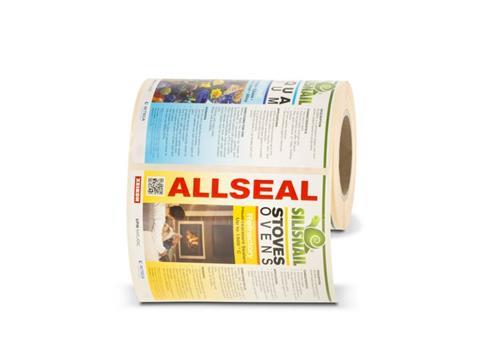
Filip Weymans, VP Global Marketing at Xeikon, talks about what companies need to know about printing labels for different environments.
Not one label is the same - different applications require different digital technology. Wine & spirits, food, beverages, pharma, health & beauty or industrial chemicals: every label comes with its own aesthetic and functional requirements. Which is why we are diving deeper into the characteristics of each of these labels in a series of blogs.
In this article, we focus on durable and industrial labels, which must often endure high temperatures, UV light, chemicals and mechanical stress. Durable labels used in washing machines, PCs, cars, machinery, refrigerators etc. are intended to last several years. They are often subject to extreme conditions, such as high or low temperature, excessive exposure to UV light or contact with chemicals. In order to meet the end user’s and the brand owner’s expectations, the labels must be durable as well.
A technology agnostic approachAt Xeikon, we did an in-depth analysis of different digital label printing technologies (dry toner and liquid toner electrophotography, UV-curable inkjet and water-based inkjet), taking into account quality basics (dot positioning and dot sizes), substrate compatibility and process reliability as well as characteristics such as look & feel, durability and sustainability. The results are published in a white paper which is free for download from the Xeikon website.
Based on this analysis, Xeikon recommends UV inkjet as the most optimal technology to produce durable and industrial labels. Read on to find out why exactly.
#1 Temperature and mechanical stressDry and liquid toner images are polymers fused to the substrate, so when heated, they can melt again. Applying heat-resistant lamination remedies this issue. UV-curable and water-based inkjet are heat resistant: the polymers formed after the complete curing of the UV-curable inkjet have a high melting point. In water-based inks, the concentration of polymers on the substrate surface is too low for the ink to melt and become sticky. Moreover, UV inkjet inks are resistant to mechanical stress after being exposed to UV light.
#2 Chemical resistance of durable labelsCross-linked inks/toners are generally highly resistant to chemicals, which explains the performance of UV-curable inkjet inks compared to that of liquid or dry toner: the resins in toner are mostly not cross-linked. Applying chemically-resistant lamination remedies this issue but comes with a cost.
#3 UV sunlight and durablesLightfastness is critical for high quality labels. It is a measure of how well a printed image resists discoloration or fading as a result of exposure to light over time. Products sitting on a store shelf or in a warehouse are often exposed to direct sunlight for hours on end. The UV affects the color pigments, causing the image to lose its brightness over time. It is a natural process which can be slowed down by adding protective UV layers on top of the label (varnish or laminate). From the start, Xeikon invested in high quality toners, UV inks with great lightfastness scores without any additional protective finishing.
Without applying any additional protection, liquid toner and water-based inkjet achieve a very poor result.





















